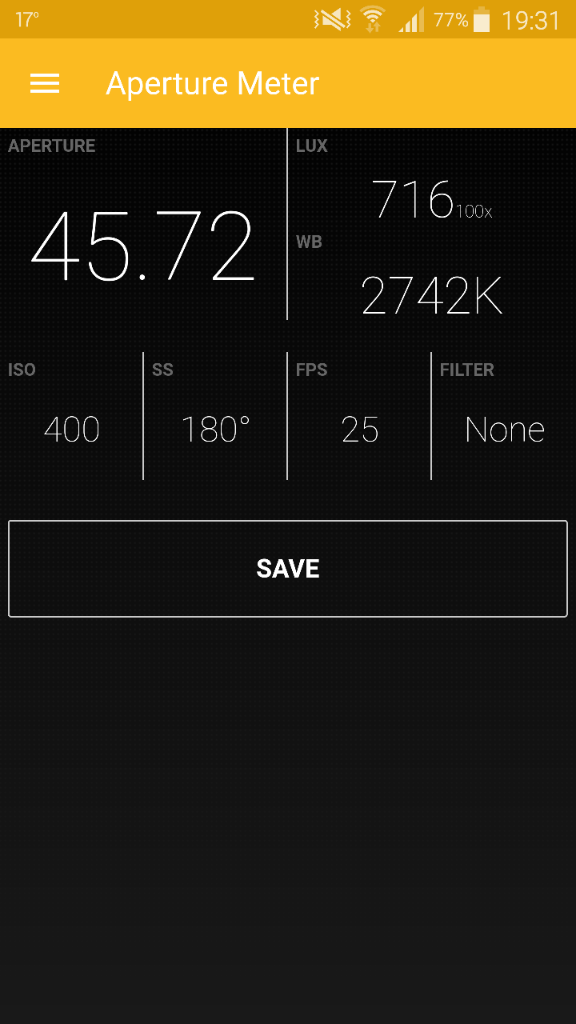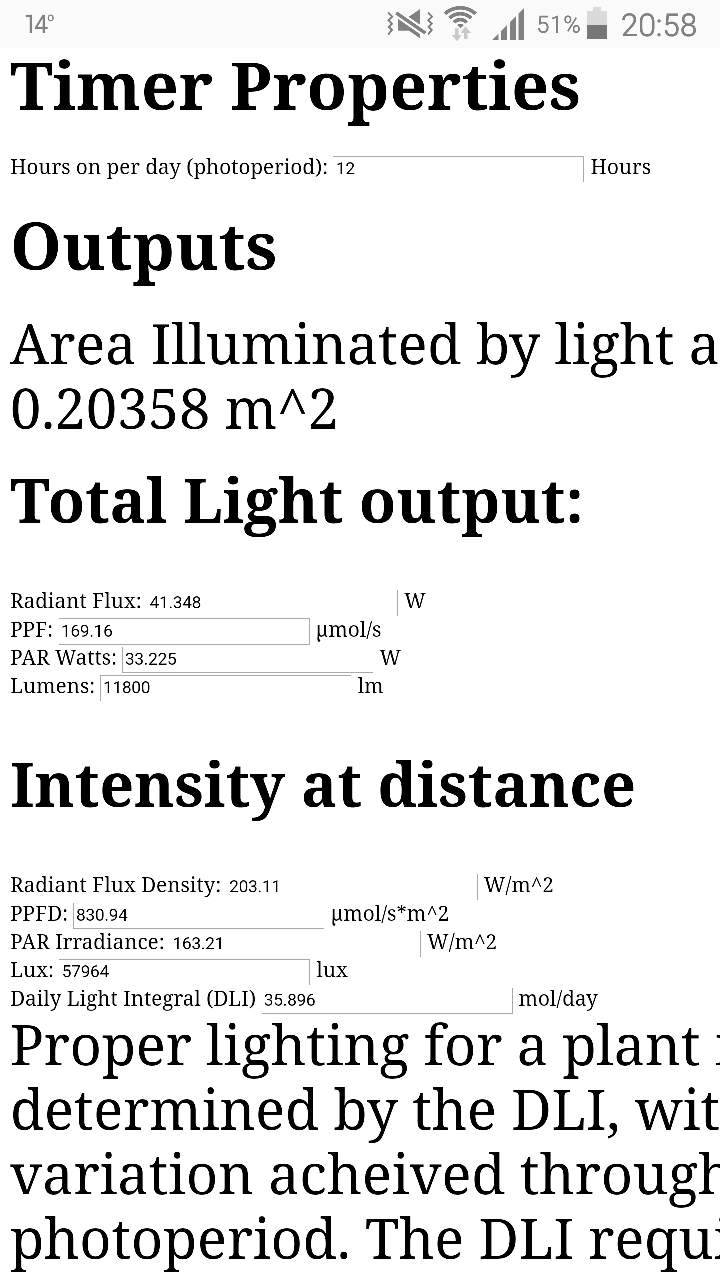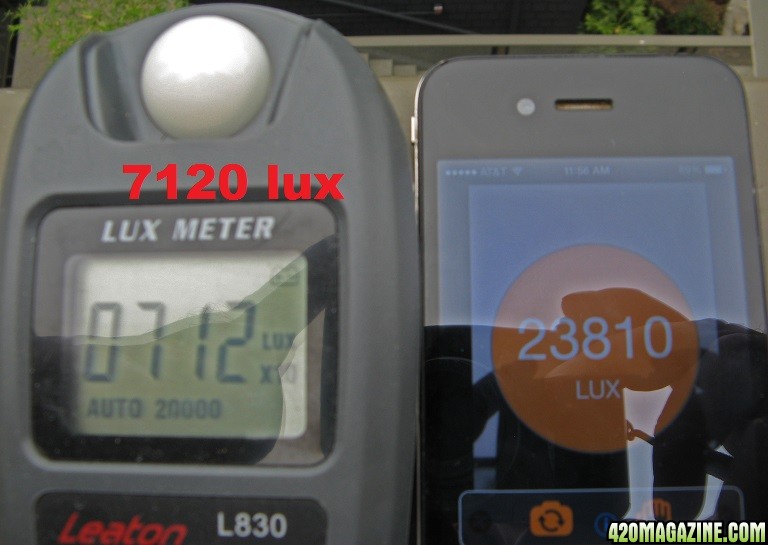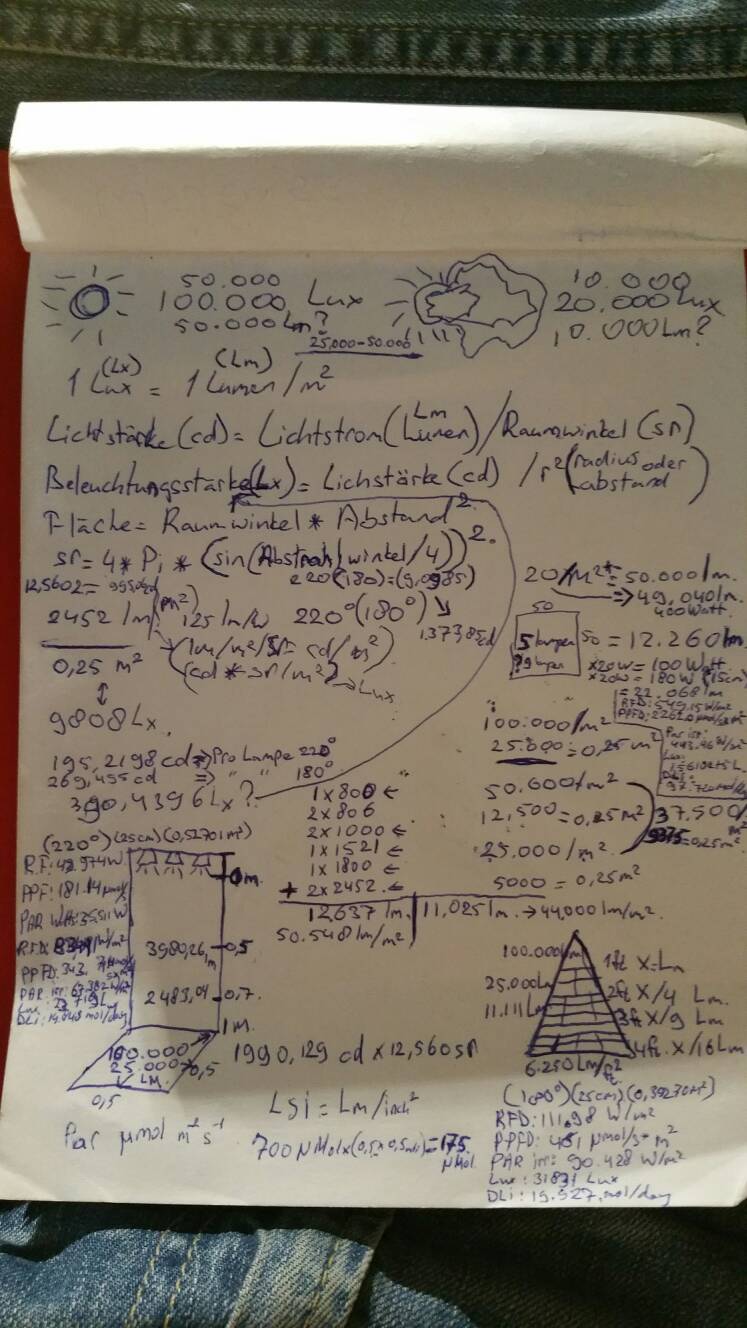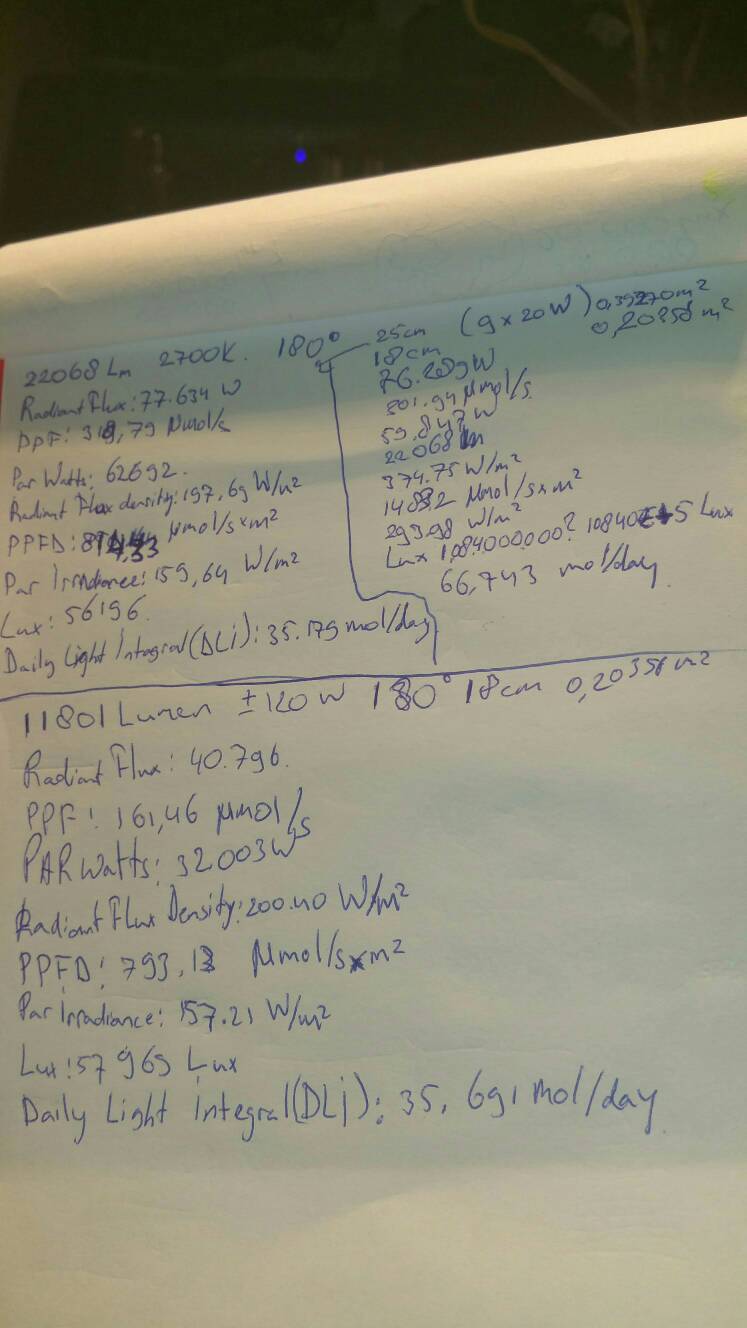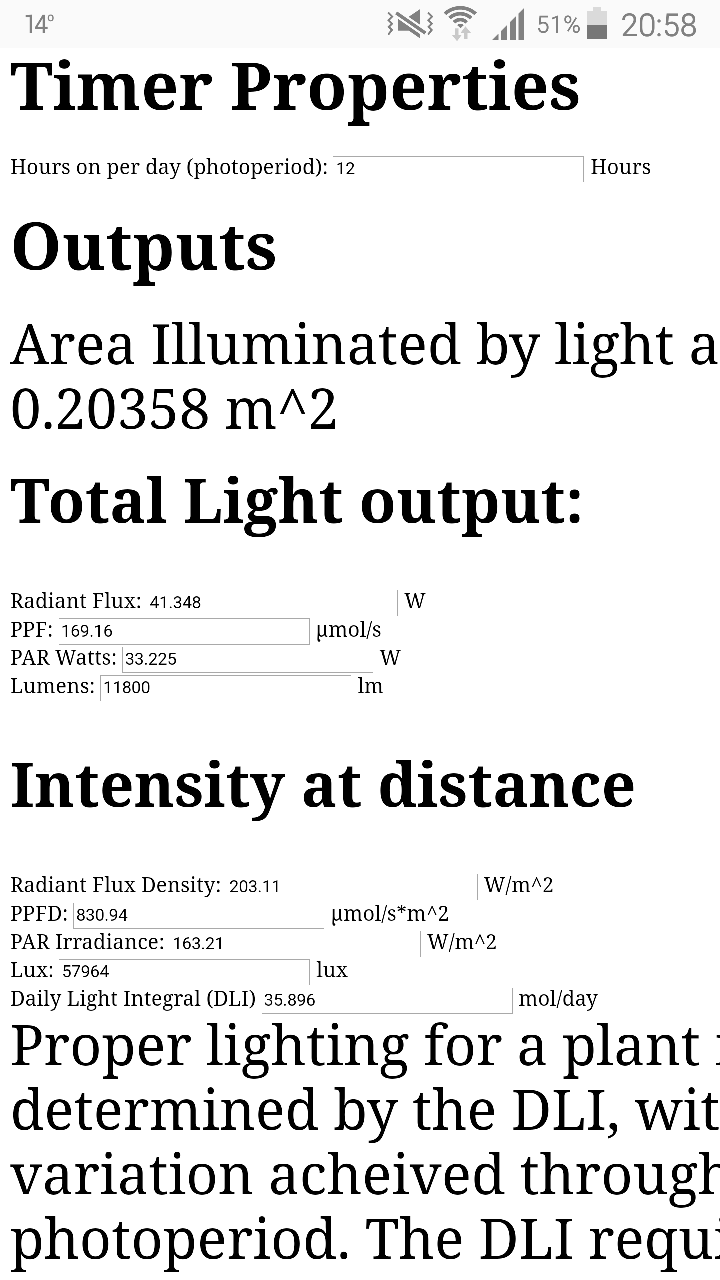bebecillo
Well-Known Member
I've read lots of info talking about par but can't find any details other than conversion factors and technical jargon. My 80W LED reports 10.000 lux and now that i put my plant closer it reports about 30k, altough it oscillates, probably due to electrical noise and led refresh rate.
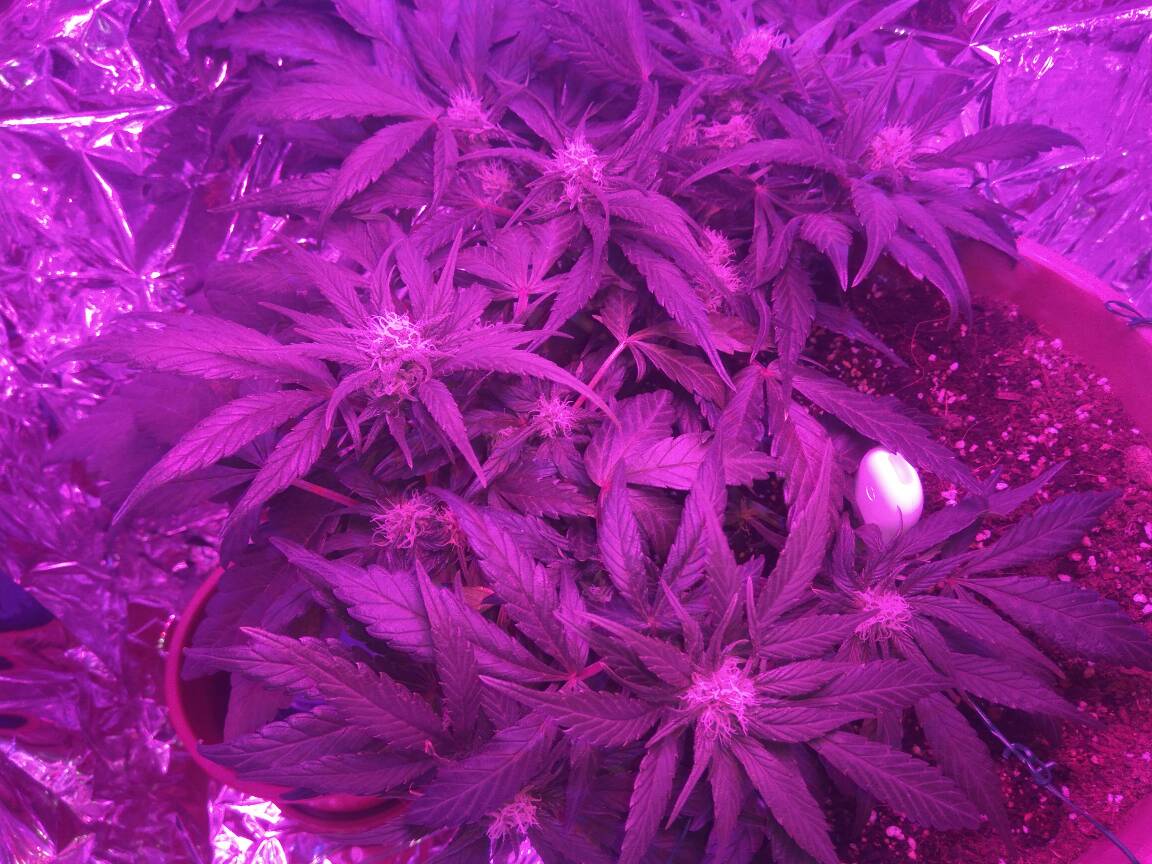
(Feel free to drop on my grow, link's at my signature)
Anyway, I'm getting my light meassurements using a xiaomi flora and cannabis is hidden under another name so I don't think it's safe to trust its safety zone (specially since lots of you have multiple 600w leds), but the daily report gives me a mmol reading (umol) and that should translate to par, right
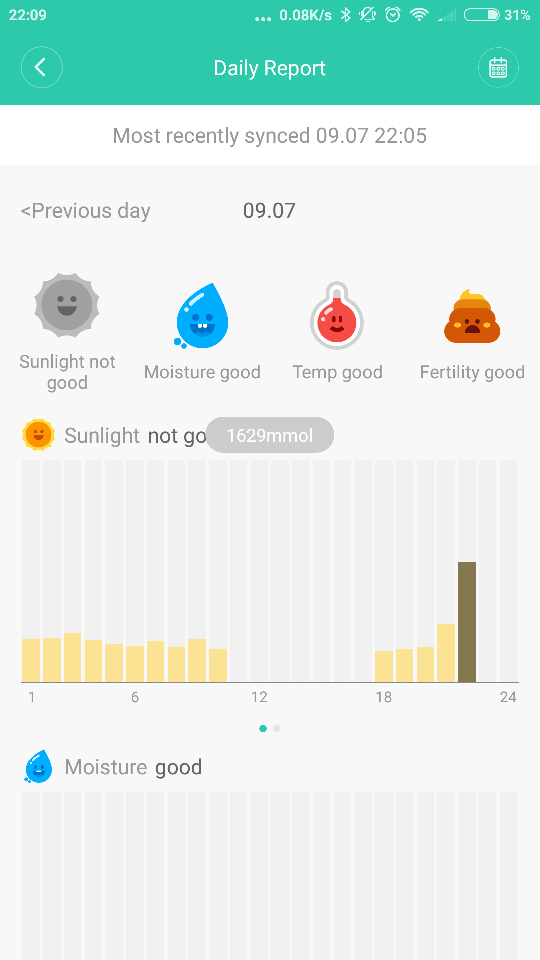
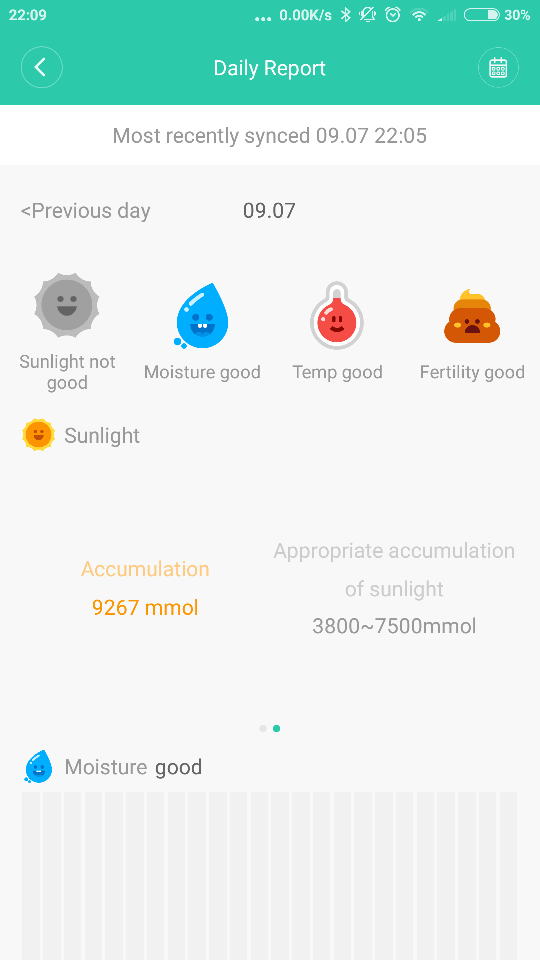
Anyway. My point is i need help translating the device readings and guesstimate the conversion factor considering this is calibrated for sunlight and not led light. Can anyone help me please?
Some links I used
Conversion - PPFD to Lux

(Feel free to drop on my grow, link's at my signature)
Anyway, I'm getting my light meassurements using a xiaomi flora and cannabis is hidden under another name so I don't think it's safe to trust its safety zone (specially since lots of you have multiple 600w leds), but the daily report gives me a mmol reading (umol) and that should translate to par, right


Anyway. My point is i need help translating the device readings and guesstimate the conversion factor considering this is calibrated for sunlight and not led light. Can anyone help me please?
Some links I used
Conversion - PPFD to Lux




